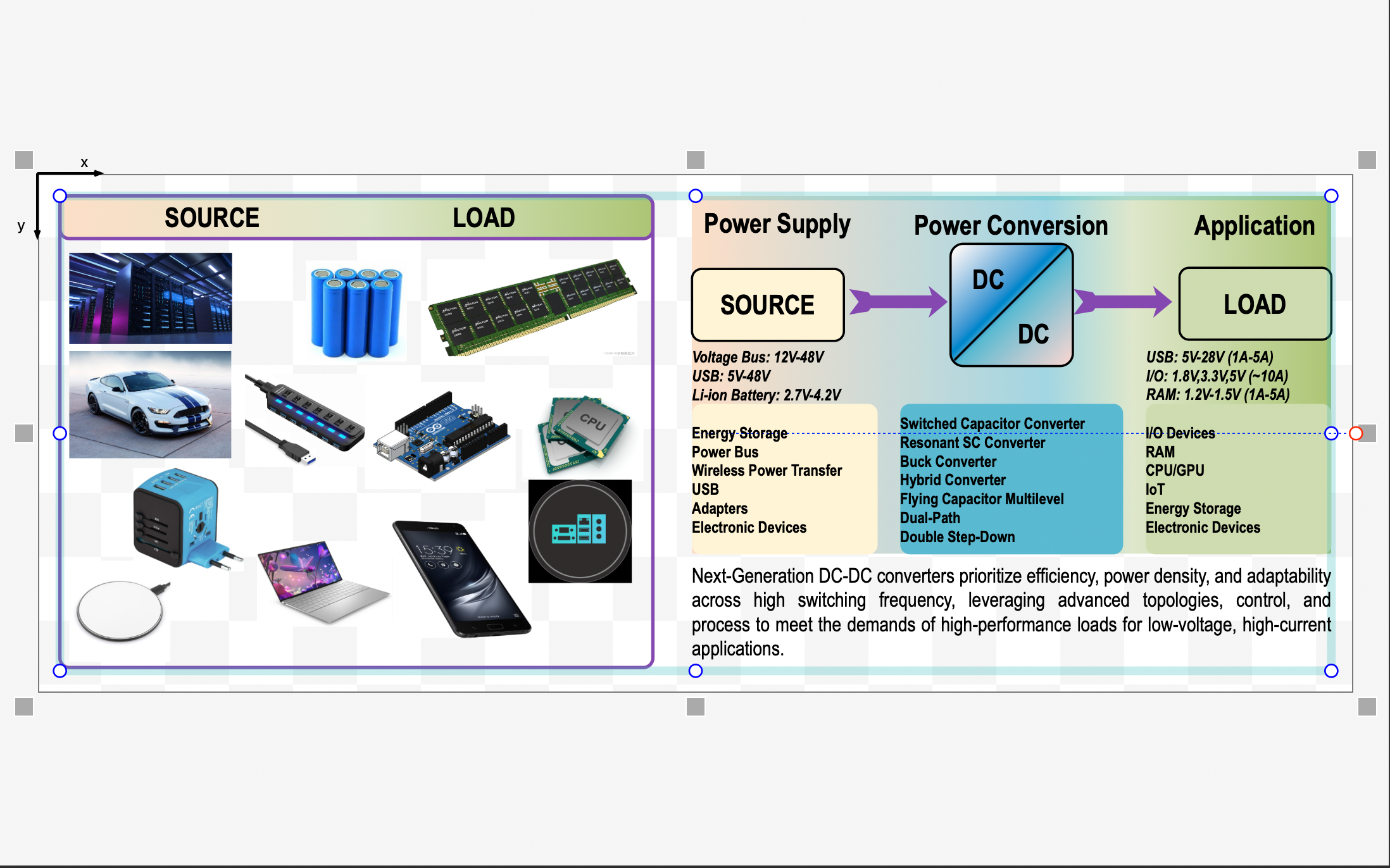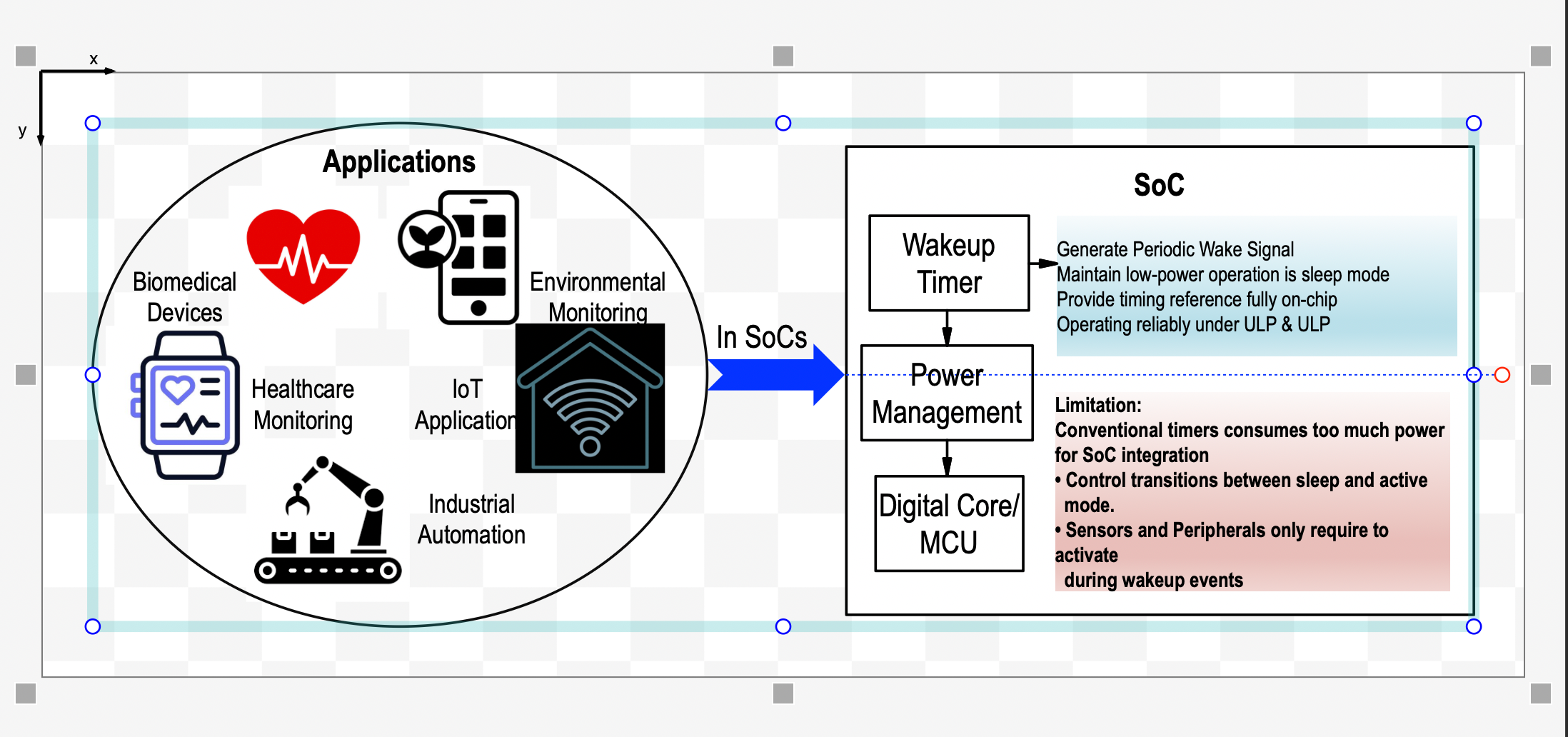As IoT expands into healthcare, industry, and smart environments, powering countless low-power devices becomes a major challenge. Batteries, though common, pose serious drawbacks: limited lifespan, maintenance overhead, and environmental harm—especially problematic in wireless sensor networks (WSNs) where access is limited.
Ambient RF energy harvesting (RFEH) offers a compelling solution. These systems scavenge energy from existing wireless infrastructure—Wi-Fi, cellular, and Bluetooth—and convert it into DC power. This enables batteryless operation for ultra-low-power nodes, enhancing autonomy and sustainability.
Thanks to CMOS scaling, miniaturized SoC-based RFEH solutions are now viable. These compact systems serve critical applications:
- Biomedical wearables (e.g. heart/glucose monitors) for continuous, non-invasive power.
- IoT healthcare devices requiring zero-maintenance operation.
- Remote industrial sensors where battery replacement is impractical.
- Automotive sensor nodes for self-powered ADAS and vehicle diagnostics.
Since early 2000s, RFEH research has advanced from maximizing peak Power Conversion Efficiency (PCE) to prioritizing real-world performance metrics like:
- Sensitivity: Minimum RF power needed to generate ~1V, crucial for low-RF environments.
- PCE Dynamic Range (PDR): Consistency of performance across varying input power levels.
A key challenge limiting PDR is reverse leakage current, especially at high input power. Despite its impact, it remains an underexplored bottleneck with room for innovation.
Moving forward, next-gen RFEH systems must focus on improving robustness, sensitivity, and leakage mitigation to meet the energy demands of autonomous, low-maintenance IoT and biomedical devices.
📌 Main Points :
Problem with Batteries :
- Short lifespan, need for maintenance, environmental impact.
- Unsuitable for inaccessible or remote wireless sensor deployments.
Solution – Ambient RF Energy Harvesting (RFEH) :
- Converts energy from Wi-Fi, Bluetooth, and cellular signals into usable DC power.
- Supports batteryless, maintenance-free sensor operation.
System-on-Chip (SoC) Integration
- Enables miniaturized and efficient RFEH systems.
-
Practical for:
- Biomedical wearables (e.g. heart/glucose monitors).
- Healthcare IoT devices.
- Remote industrial sensors.
- Automotive sensors (ADAS and diagnostics).
Performance Metrics in RFEH :
- Sensitivity: Ability to generate ~1V in low RF power conditions.
- PCE Dynamic Range (PDR): Consistent performance across varying RF input strengths.
Key Challenge
- Reverse leakage current degrades PDR, especially at higher input levels.
- Needs more attention in future RFEH designs.
Future Focus
- Improve robustness, sensitivity, and leakage control.
- Meet growing power needs of autonomous IoT and biomedical applications.



